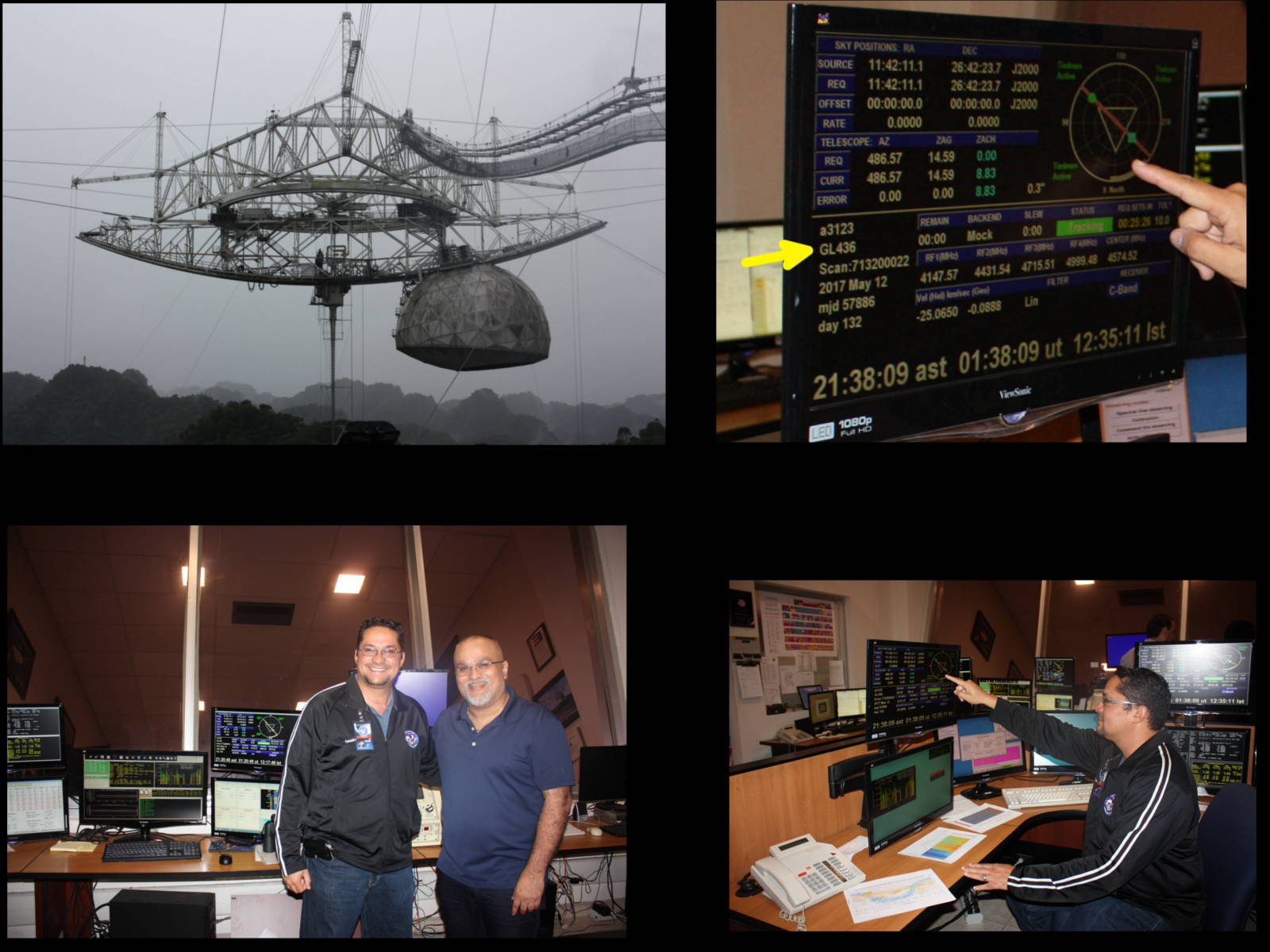Report
Scientific Project to Search for Extrasolar Planets at the Arecibo Observatory

Our team of Astrofotografia y Ciencia (Solar System Ambassador - NASA / JPL Fernando Roquel Torres and Professor Erica Correa Felix) was invited by Prof. Abel Méndez, who is a planetary scientist and astrobiologist at the University of Puerto Rico in Arecibo studying the Potential for the life of the planets, to a Scientific Project to Search for Extrasolar Planets at the Arecibo Observatory on Friday, May 12, 2017 from 7:30 pm to 10:00 pm.
From the beginning, Professor Méndez was demonstrating the equipment in the control room of the most sensitive radio telescope in the world.
Professor Mendez explained where the data collected from the radio telescope were stored.
He also explained where the data collected from the radio telescope was stored for the Seti @ Home (Seti Burst) program at the University of Berkeley.
Our Astrofotografia y Ciencia team actively participates in the Seti @ Home program in all its computerized equipment.
Professor Mendéz explaining the process of tracking and calibration in the objective of the observation in star GL 436.
Professor Erica Correa Felix participating in the scientific project of observing exoplanets.
The Solar System Ambassador - NASA / JPL Fernando Roquel Torres verifying the observation to the red dwarf star Gliese 436 from the control room of the Radio telescope of Arecibo realized by the professor Abel Méndez.
The observation area is at star GL 436 in the constellation Leo at 33 light years away from Earth. This star has an apparent visible magnitude of 10.67 which at first sight the human being can not see it since it reaches only a visible visible maximum of 6.
We greatly thank Professor Méndez for inviting our Astrofotografia y Ciencia team (Fernando Roquel Torres and Erica Correa Félix) to witness the observation of the red dwarf star GL 436 which contains extrasolar planets, visit the area of controls, backups, Seti @ Home (Seti Burst) of the Arecibo radio telescope.
For more information, please visit my blog:
http://astrofotografiayciencia.blogspot.com/2017/05/proyecto-cientifico-para-buscar.html









Comments